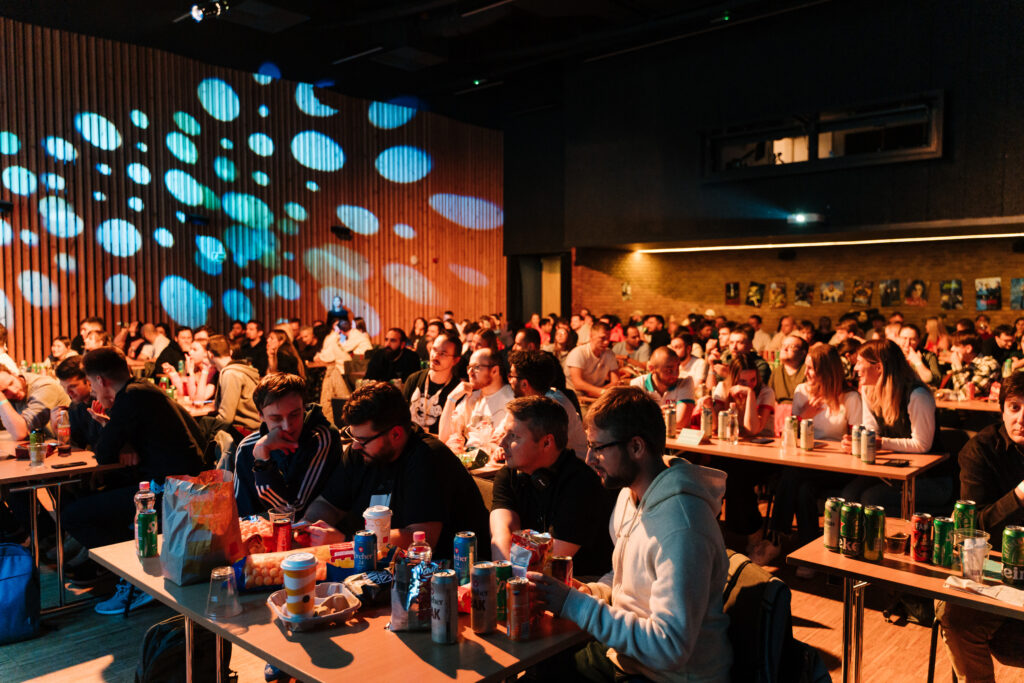How UX Research Can Enhance Your Design
The joy of sketching UX/UI design is undeniable, but the true thrill lies in crafting a design that’s grounded in the belief that it will genuinely enhance users’ lives. Conducting UX research, uncovering insights, collaborating on solutions with a team, and ultimately shaping a design—it’s an experience like no other.
User experience research isn’t just a part of successful product development; it’s an immersion into the very essence of the design process. If this journey isn’t fulfilling, what’s the point? That’s why we can confidently state that delving into UX research can rekindle your passion for the profession and boost your self-esteem as an expert.
The Key Phases of UX Research
Discovery and Architecture Research
You can jump into the fascinating world of research even without a specific project. We recommend watching this video from Nielsen Norman Group which covers the intricacies of when to employ different UX research methods. You’ll probably feel overwhelmed by the volume of research discussed, but it provides a comprehensive overview of this field’s various stages. While watching the video, you can take notes, allowing you to have these insights on hand whenever you need to clarify the research’s progression to a client. It It’s like having a ready-made blueprint that you can tailor to the specific context of your project.
Field Studying and Competitive Analysis as Components of the First Stage of UX Research
It may happen that you might find yourself entering a project during its initial phases with no clearly defined market offering. For example, envision that you’re involved in a project focused on selling abstract artwork.
Your first task would involve pinpointing the Unique Selling Points of the artwork in a crowded market. While this task usually doesn’t fall within the designer’s responsibilities, working on user experience (UX) inherently contributes to the brand’s development. A brand’s success is closely intertwined with design success. Therefore, providing insights on market positioning early in the project becomes a valuable contribution.
Following this, the next step entails conducting field research to comprehend the dynamics of the art market. This includes identifying contemporary art buyers and understanding their preferences. Simultaneously, a thorough analysis of competitors in the same market should be undertaken. If any shortcomings in the artwork’s Unique Selling Points are identified, adjustments should be made, just as they would be at any stage of the project.
Identifying Our Target Audience
In our hypothetical case, it’s essential to categorize the target audience into specific groups and identify a typical average representative from each of these groups. In terms of terminology, we refer to these as Personas. To study Personas, you can use the Miro template or what is offered by FigJam, depending on the specific task at hand.
FigJam is ideal for swiftly sketching out personas when you require a more streamlined approach, focusing on outlining who these individuals are and their key characteristics.
On the other hand, Miro provides a more comprehensive platform for analysis. In our hypothetical project, Miro stands out as the preferred choice since we need to document the foundational data shaping our understanding of the Personas, describe their attributes, and outline the rationale behind our decisions.
Another cool feature of the Miro template is the “Our Response” column. While creating Personas is undoubtedly valuable, the critical question remains: What’s next? How does this process impact the subsequent stages of design? The template encourages you to think about specific things, such as how Personas can help make the product more user-centered, i.e., one that clearly meets the interests of the user.
Early Design Phases
During this stage, an initial design is either created or already exists. In our hypothetical project, we should begin with the wireframe.
We strongly recommend creating a wireframe before developing the final UI design. In your early career, it’s easy to skip this stage, focusing primarily on making things visually appealing for platforms like Behance or clients. However, with experience, the approach shifts. The primary goal becomes designing solutions that enhance users’ lives, even incrementally. This entails building the User Journey’s logic without getting bogged down in visual details, making wireframes invaluable.
What to do when a client does not value UX (user experience) research?
It’s essential to explain to the client why investing time and resources in research for your UI/UX design is worthwhile. To do this, you need to thoroughly understand the value you’re advocating for. And to be fully convinced of it
- read books about UX design and product development (we recommend “Continuous Discovery Habits” by Teresa Torres);
- absorb this knowledge through other resources, such as Youtube videos or listening to podcasts (Nielsen Norman Group and Lenny’s Podcast are in the top list)
- attend UI/UX design events or take relevant courses.
This creates an information and value cocoon around you, turning user experience research methods from an extraordinary concept into an integral part of your design process. The book “Ruined By Design” will convince you that designers aren’t mere hands. Designers bear a huge responsibility, and can influence numerous aspects: from offering recommendations for MVP features (the very first version of the product) to delivering the final polished design. To leverage this influence effectively, you must study your users. Otherwise, you won’t have the essential information you need.
Be well-prepared before presenting a solution to a client. Construct a solid and well-coordinated argument. Does it work in 100% of cases? No, it won’t. What should you do? Give it your best effort. If it doesn’t succeed, don’t be hasty in leaving your job or sacrificing your love for UX design.
When confronted with requests like, “I’m the client, and if I say do this, you must do that just because I said so,” carefully consider whether it’s wise to work with such clients. If it involves unethical design, discrimination against specific user groups, or the unnecessary collection of sensitive personal data, this consideration becomes even more critical.
What kind of research should you pitch to a client? The UX research that leads us closer to achieving the Desired Outcome. Each project stage has a specific goal, like increasing sales from X to Y% per quarter. It’s vital to consider the following questions: What factors are presently hindering sales growth? How can product design effectively tackle this challenge? As you delve into these inquiries, you’ll inevitably realize that there are aspects you don’t know about your users. It’s crucial to communicate this to the client and then engage with individuals in a manner that suits your research goals to fill these knowledge gaps.
Conduct UX Research Like a Pro – Surveys and Interviews
Surveys and interviews can be conducted at any project stage. However, let’s focus on their specifics during early stages.
At NIX, we’re developing an internal service to streamline one of our department’s routines. At first, we conducted a survey, identifying prevalent issues – what inconveniences team members face. We analyzed the data collected, presented our findings, and made several conclusions. In the end, we understood what the final product should contain to really make the routine easier. The main task was to provide an overview of the situation – how people feel at the moment, how satisfied they are with the work of internal services. But there were still things we didn’t know about our target audience. We had to go deeper and understand how representatives of each user group use the department’s services. And this is where in-depth user interviews came into play.
How does it work? Once again, there are aspects about your audience that you remain unaware of. This information is pivotal for determining what product would best serve their needs. These informational “blind spots” should be filled with insights gathered during conversations.
Our advice is not to wait for the perfect moment when you’ve completed another course and think you’re fully prepared to conduct interviews. There’s no such thing as the ideal moment. If you already sense a degree of ignorance about your target audience’s behavior, find people and conduct interviews. The context of users’ lives that you’ll immerse yourself in during the user research will provide invaluable insights. This experience is truly incomparable.
What data should be considered valid?
Now, the million-dollar question: How many interviews are needed to consider the data valid? You should begin to identify patterns – commonalities in the behavior and responses of the participants. This will guide you toward formulating a solution. An average of five interviews aligns with the least acceptable number recommended by Nielsen Norman Group experts.
Stepping it up a notch – adding usability testing
Returning to the hypothetical project we discussed earlier, we’re now transitioning to the detailed wireframe stage for the entire website (a platform for selling art). While surveys aren’t feasible at this stage due to limited access to the target audience, you might have access to individual representatives. These individuals are art investors who have expertise in creating digital products. They know what a wireframe is, so it doesn’t come as a shock to them.
At this stage, you should have several hypotheses about the functionality that need validation through usability testing. Simultaneously, you need to immerse yourself in the context of potential clients’ lives. Combining these requirements is quite feasible. In the first part of the user interaction, you should ask all the necessary questions, and in the second part, you should assign tasks (which form the essence of usability testing). For example, we instruct the user to order a painting on the website while asking them to comment on their actions, which we observe. If they encounter difficulties or face comprehension issues (usually related to site functionality), and it turns out they’re not alone in this, we understand the need for revisions.
Later Design Phases
In these later design phases, it’s crucial to continue applying surveys, interviews, and usability testing. The main difference is that there’s already a defined UI design, allowing for more substantial conversations.
Taking Usability Testing to New Heights
In our experience, we had a noteworthy practice involving usability testing of a clickable prototype created in Figma. Before the test, the users were sent a link to the prototype. They opened it in a browser and completed specific tasks during a video call. The team carefully observed their actions and draw conclusions.
Efficient organization and impartiality are essential in these tests. Be ready to discard a proposed solution if it proves unsuccessful. Collect data, analyze, make adjustments in the design, and then move forward.
All this research might initially seem burdensome, time-consuming, and potentially unjustified. For specialists who delve deeply into these tests without immediate practical results, it can certainly feel that way. However, the goal is to save time for the team and the client. This UX research helps avoid investing resources in something the product’s target audience doesn’t need or identifying user flow issues early on, ultimately sparing the customer from spending a substantial amount of money, time, and frustration on rework.
Complete Working Design Phases
The pinnacle of the design process is achieved when engaging in Continuous Research, collecting feedback from the audience regularly, regardless of whether a new feature is currently being launched. You might wonder why this is necessary. Well, your product shouldn’t operate in vacuum. Various external factors influence users, such as competitors introducing new products or shifts in the economic landscape. Continuous research enables staying in tune with these evolving dynamics.
The Conclusion is Simple: Do User Research!
UX research plays an integral role at all stages of a project. Different research methods can be applied at various points, and their effectiveness lies in the proper execution.
Our advice to designers who don’t use user research yet but would like to start: turn off your perfectionism. Read how to conduct interviews (at least this article) and just start doing it. Feel the need to take a special course? Great, go study. At the same time, you can practice research beforehand. With experience, you will see that you can not only draw mockups but also delve into analytics. And your expertise will grow.
Watching designers who are just beginning to delve into research, keen interest and enthusiasm are noticeable. And that’s great because you should be interested and enjoy doing your job above all. You have to realize that you are making the world a better place. And you will definitely make it so by creating good design.






